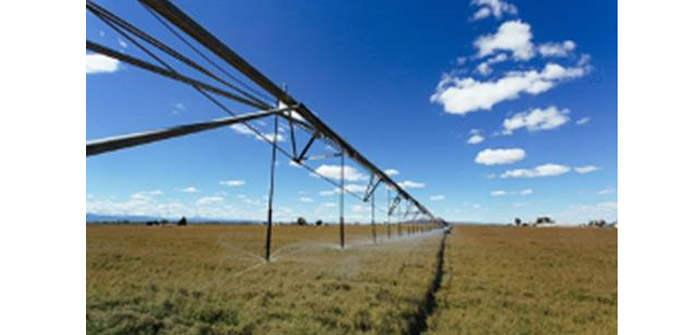(This farm property showcases a center pivot irrigation system | Photo by Marisa Chappell Hossick)
The Deschutes River Conservancy (DRC) and Central Oregon Irrigation District (COID) have announced plans for a new on-farm program that will increase on-farm irrigation efficiencies and conserve water.
At a time when Central Oregon’s water resources are being stretched further than ever, improving on-farm efficiencies has great potential to conserve water in a way that is beneficial to all users and the region.
Agriculture is the largest user of surface water in the Deschutes Basin, with irrigators using more than 86 percent of the water diverted from rivers and streams.
The goal of the on-farm program is to modernize delivery and irrigation systems to reduce the amount of water needed to deliver and efficiently apply on COID farms. These projects will help meet the needs of the river and other irrigation water demands in the Deschutes Basin.
On-farm efficiency is defined as anything past the point of irrigation delivery — including private laterals and on-farm application methods.
The amount of water COID saves through on-farm improvements, piping and other conservation measures can be shared with North Unit Irrigation District (NUID) and other junior water right holders to ensure that farmers have the water they need, even in dry years. NUID will then be able to make water available from their storage in Wickiup Reservoir to increase winter flows in the Deschutes River.
“While we cannot create new water, losses from inefficient delivery systems can be reallocated,” said Shon Rae, COID’s deputy managing director.
COID has made an initial investment of $100,000 over two years to jumpstart the program and added a full-time staff member dedicated to the On-Farm Program. In addition, COID will be launching a low-interest loan program to district irrigators for qualified projects.
Repeated low snowpack and scant annual precipitation, along with higher than average temperatures, have reduced natural flows in the river and resulted in record low water storage levels in Central Oregon reservoirs. There is not enough stored water to augment natural flows, a strategy that water managers have depended upon, given that demand otherwise exceeds natural river flows.
“Our first focus is to identify priorities, outreach needs, funding sources and to determine ways to measure and evaluate the program,” said Lisa Seales, on-farm consultant. “Our next step is to develop a formal program structure and outreach plan.”
“Voluntary efforts by landowners who undertake on-farm improvements combined with large-scale piping projects will allow us to achieve system-wide results in less time,” said Rae.
The program could focus on piping private laterals and irrigation conversions/upgrades to a more efficient system, as well as provide information and technical assistance for landowners to efficiently maintain and manage their systems. This work can also create additional opportunities to accelerate water marketing programs with willing landowners.
“We’re amassing a list of potential funders that includes federal and state agency grants and loans, utility provider incentives and a COID loan program to assist interested landowners in completing their desired on-farm project,” said Seales.
Program evaluation could involve measuring increased water and energy efficiency or crop yield, the number of acres or landowners served by the program, the number of miles of pipe installed, or even reductions in time and money spent on maintenance. For the DRC, success will be measured by a reduction in demand that provides benefit to basin-wide water resources and rivers.
DRC Program Manager Natasha Bellis said, “We see on-farm efficiency work as one of the important tools in the toolbox to restore flows. When canal piping is paired with on-farm efficiency upgrades and water marketing programs, the benefits to the basin will be multiplied.”





